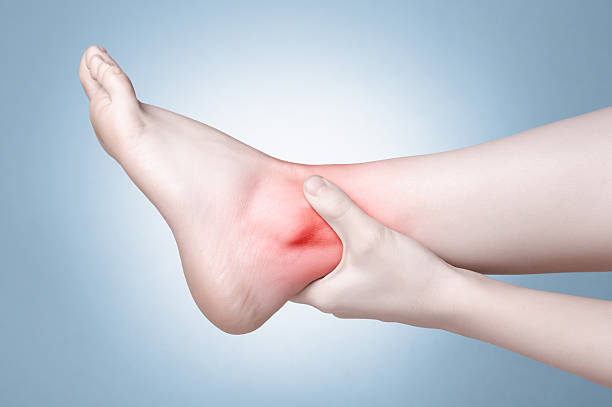Have you ever played sports such as running or football and then somehow you feel some sort of leg pain? Or probably you were walking up the stairs and felt some ankle pain? No matter what you do in daily life, ankle pain can bother you and cause great discomfort. Some ankle pain might even cost you walking problems and sleepless nights.
Ankle pain can be caused by injury or even without any injury precedes it. There are many causes of ankle pain and most common one includes:
- Ankle fractures
Broken ankle means one or more broken bones making up the ankle joint. It can affect anyone of all ages as the main cause is injury such as car accidents, twisting or rotating ankles or tripping on objects. Symptoms consisted of severe pain instantaneously, swelling, bruises, pain upon touch and deformity causing ankle placement out of its anatomical site.
- Sprained ankle
Sprained ankle is a condition of ligaments supporting the ankle becoming overstretched and causing tear. Sprains can range from small to complete tears. It is usually caused by twisting injury such as walking on uneven or slippery surfaces and sports requiring jumping such as tennis. Since the symptoms are very much similar to a broken ankle, it is difficult to distinguish and requires further doctor examinations.
- Ankle tendinitis
Tendinitis is inflammation or irritation of a tendon (a connective tissue between muscles and bones). Sudden sharp movements or repetitive exercise such as running and jumping may cause tendinitis. Generally, athletes understand tendinitis happens when they overdo themselves especially when the body is not fit enough. People with tendinitis often experience ankle pain, difficulty to walk properly, feeling a crackling sensation in the ankle and swelling with redness or feeling warm compared to other parts of the body. Mild tendinitis should be improved within 2 to 3 weeks by giving it some rest.
- Ankle arthritis
Arthritis is characterised by a damaged or worn-out cartilage or joint. Even though the ankle is less likely to be associated with arthritis like in hip and knee, arthritis does affect the knee. It is a chronic condition which means it takes time to occur and is caused by repeated ankle sprains and fracture of the bone making up the ankle joint. Pain and swelling are the main signs of ankle arthritis.
- Ankle bursitis
Bursitis is an inflammation of a small sac made of connective tissues and filled with synovial fluid, called bursa. It is located between tendons and bone and helps reduce frictions or pressure during body movement. Bursitis is caused by a heavy blow injury such as falls or irritation from excessive friction and pressure from work requiring lots of kneeling such as gardeners, cleaners and tile installers. People with rheumatoid arthritis and gout may get bursitis as the inflammation process of those diseases progresses to the bursae. Inflammation signs like reddish warm skin, swollen and painful sensation may indicate an ankle bursitis.
- Plantar fasciitis
Plantar fascia is a thick band of tissue covering the bones on the bottom of the food. This feature supports foot arc and absorbs shock during walks. Irritation of this structure especially due to repetitive strain causes a disease called plantar fasciitis. Although this disease mainly causes pain around the heel and arch of the foot, it can affect the ankle by irritating nerves and radiate up to the ankle, causing ankle pain.
Since ankle pain may be caused by numerous diseases and symptoms similar in all of the diseases, it can be confusing for patients to know the exact problem. Hence, it is advisable to seek physicians to investigate the main issues and when the pain does not resolve in 2 weeks.
References:
https://www.nhs.uk/conditions/foot-pain/ankle-pain/
https://orthoinfo.aaos.org/en/diseases–conditions/ankle-fractures-broken-ankle/
https://orthoinfo.aaos.org/en/diseases–conditions/sprained-ankle/
https://www.nhs.uk/conditions/tendonitis/
https://www.ncbi.nlm.nih.gov/books/NBK525773/
https://www.ncbi.nlm.nih.gov/books/NBK431073/
https://orthop.washington.edu/patient-care/articles/ankle/ankle-arthritis.html






